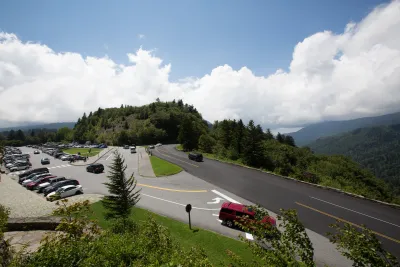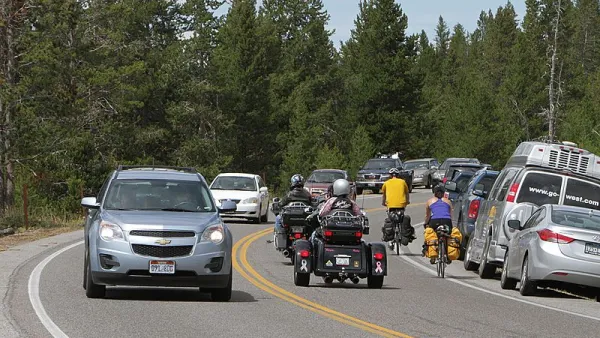The Great Smoky Mountains National Park, the nation's most visited and one of only a handful with no admission fee, could institute a parking fee to pay for much-needed maintenance.

Updated August 15, 2022 to more accurately reflect the status of the proposal at the time of this article. The parking fee plan was proposed in April but not approved until August 2022.
Elizabeth Sims reports on big changes that could be coming to the Great Smoky Mountains National Park, which may start charging for parking to raise revenue for park maintenance in the nation's most popular national park. "With 4,500 parking spaces in the park, the projected revenue gain would be around $10-15 million per year." Parking tags would be available at daily, weekly, and annual rates. "Officials said unofficial roadside parking would be eliminated to help protect resources, improve motorist and pedestrian safety and improve traffic flow through congested areas."
As Sims notes, "In its current state of operation, the Great Smoky Mountains does not have a fee or robust concessions to boost revenues outside the park. Officials said the lack of concessions was by design and has been a successful model with $50 returned to the region for every $1 of federal investment."
Because of deed restrictions on park roads, unlike a parking fee, instituting an entrance fee would require action by the Tennessee state legislature. "The last major infrastructure upgrades came in the 1930s and 1960s, meaning wastewater treatment and freshwater sources are beyond their life cycle. The strain on park employees, infrastructure and natural resources isn’t sustainable despite the dedicated funding of the Great American Outdoors Act."
The park also wants to increase backcountry camping fees and standardize other campsite fees across the park.
FULL STORY: Pay to park: Sweeping changes in the Great Smoky Mountains

National Parks Layoffs Will Cause Communities to Lose Billions
Thousands of essential park workers were laid off this week, just before the busy spring break season.

Retro-silient?: America’s First “Eco-burb,” The Woodlands Turns 50
A master-planned community north of Houston offers lessons on green infrastructure and resilient design, but falls short of its founder’s lofty affordability and walkability goals.

Delivering for America Plan Will Downgrade Mail Service in at Least 49.5 Percent of Zip Codes
Republican and Democrat lawmakers criticize the plan for its disproportionate negative impact on rural communities.

Test News Post 1
This is a summary

Test News Headline 46
Test for the image on the front page.

Balancing Bombs and Butterflies: How the National Guard Protects a Rare Species
The National Guard at Fort Indiantown Gap uses GIS technology and land management strategies to balance military training with conservation efforts, ensuring the survival of the rare eastern regal fritillary butterfly.
Urban Design for Planners 1: Software Tools
This six-course series explores essential urban design concepts using open source software and equips planners with the tools they need to participate fully in the urban design process.
Planning for Universal Design
Learn the tools for implementing Universal Design in planning regulations.
EMC Planning Group, Inc.
Planetizen
Planetizen
Mpact (formerly Rail~Volution)
Great Falls Development Authority, Inc.
HUDs Office of Policy Development and Research
NYU Wagner Graduate School of Public Service




























